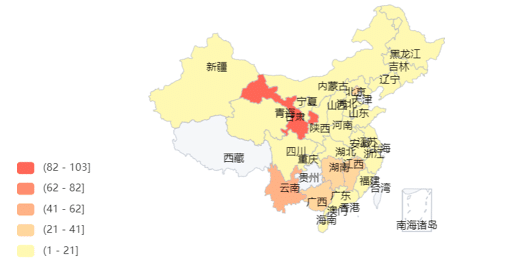Editor’s Note: This is summary of survey report detailing the effects of the global COVID-19 pandemic on social organisations operating in China. The most critical findings and details have been identified and translated into English from Chinese. The Chinese language summary of the report is available on our Chinese site. The full English version of the report will be published in due course.
Report Summary
In March 2020, China Development Brief (CDB) along with another 14 public welfare organisations conducted an online survey to understand what negative effects the COVID-19 pandemic brought to public welfare organisations in China and what long-term effects it will have on these organistaions in the post-pandemic era. A year later, with the pandemic still a threat to global development and security, CDB has contended the difficulties faced by public welfare organisations and their demands may have changed. In order to grasp a better understanding of the picture, CDB decided to conduct another survey in March 2021. Different from the previous survey, this year the questions primarily focus on difficulties and demands in funding, instead of more general programme and team management issues.
Starting from March 17, this survey collected data from 410 respondents until March 28. Considering the types of organisations CDB targets are local small- and medium-sized, community programme-based and grassroots hub organisations with external funding (government procurement and financial support from domestic foundations), the actual effective samples are 399.

Among them, 331 samples are medium-sized service-oriented public welfare organisations, and 46 are grassroots hub public welfare organisations. Despite limitations of insufficient sample size from different locations for statistical measurement, this report has reflected on the genuine difficulties and needs faced and required by local public welfare organisations in the midst of the pandemic. The results of the survey are as follows:
- Level of the impacts of the pandemic on public welfare organisations: 80% – 85% of the programme-based organisations said they can survive the COVID-19 pandemic; yet there are 15% – 20% of the public welfare organisations reporting substantial loss during the pandemic which is likely to lead to organisation closure; it is estimated that 15% – 20% of the public welfare organisations have already closed down.
- Impacts of the pandemic on the actual income of the organisation: compared to 2020, 28.8% of the organisations have experienced more than a 50% decline of their income, among which 11.3% of them experienced more than 70% of the income loss; yet there are 24.8% of the organisations report their incomes have not reduced, and some of them even have increased incomes.
- Expectations on organisations’ cash income of 2021: nearly 50% of the respondents have shown pessimistic attitudes, namely, they said the income will sharply decrease yet the organisation could survive; 35% of the respondents report the income will be more or less the same with last year, and the organisations can certainly sustain; both extreme pessimists and extreme optimists belong to the minority, accounting for less than 5%.

Through this survey, the vast majority of the respondents also provided their opinions of potential solutions for the current hardship. In general, there are four important points:
- The government should invest more in procurements of public welfare services;
- The government should publish more favourable and friendly policies for the public welfare sector;
- Donors should be more flexible in the use of funds given to public welfare organisations;
- Foundations should increase their funding to public welfare organisations.
As the pandemic situation is relatively stable in China and is likely to end in the near future, its negative impacts on public welfare organisations will gradually be ameliorated. Nevertheless, it will certainly be a long time before the overall negative impact brought by the pandemic is gone. In light of the fact that the main sources of funding for local public welfare organisations are government procurements and funding from domestic foundations, more financial support from the governmental bodies and foundations are of great significance to improve the financial hardships for public welfare organisations.
In the meanwhile, the COVID-19 pandemic has not only brought difficulties in finance and programme operations, but also brought enormous changes on the needs of vulnerable groups as well as public welfare services provided to fulfil their needs. Facing these new changes, public welfare organisations must adapt to the new situation and improve their capabilities, professionalism and quality of services.
The government and donor organisations should also fully recognise the unique advantages and expertise that public welfare organisations possess for effectively serving and supporting vulnerable groups. Funding should be increased to public welfare organisations to give them the space to adjust to the new environment and flexibility in programme planning. Yet, the improvement of the whole public welfare sector demands combined effort from all actors involved, and it is critical to encourage trust-building programmes and more cooperation between public welfare organisations and donor organisations, governmental bodies, corporations and communities.



